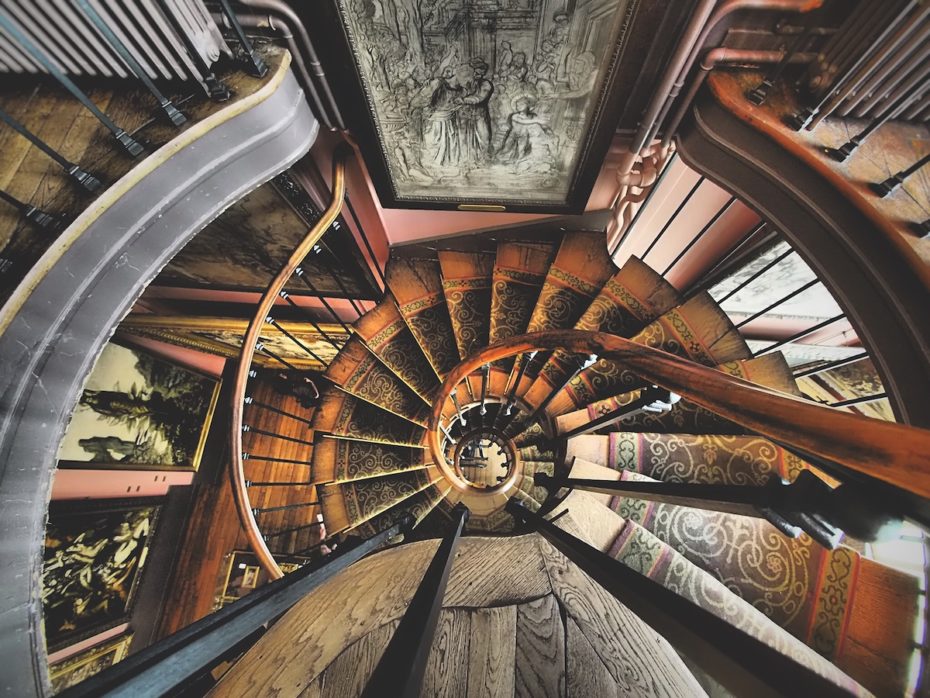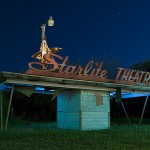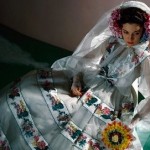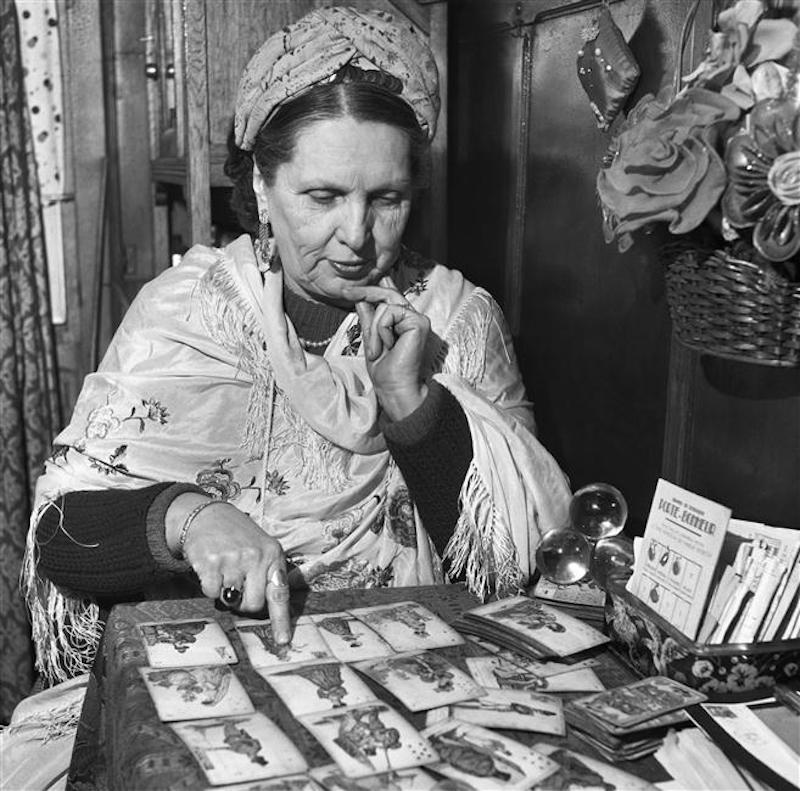
Like a moth to a très spooky flame, esoteric figures have always flocked to Paris in pursuit of deeper, mystical truths about the universe; from medieval alchemists to cult tarot card readers; mystic bent Surrealists to a long running society of Freemasons – it’s not just the way that this city protects its esoteric heritage, but how it’s continually propelling it into the future that makes it so endlessly enchanting. From the best occult bookstores, figures, and stories – and even a few mysteries hiding in plain sight – we’ve compiled the ultimate list of Paris’ esoteric musts. No matter what dimension you’re visiting from.
The Secret Freemasons Street
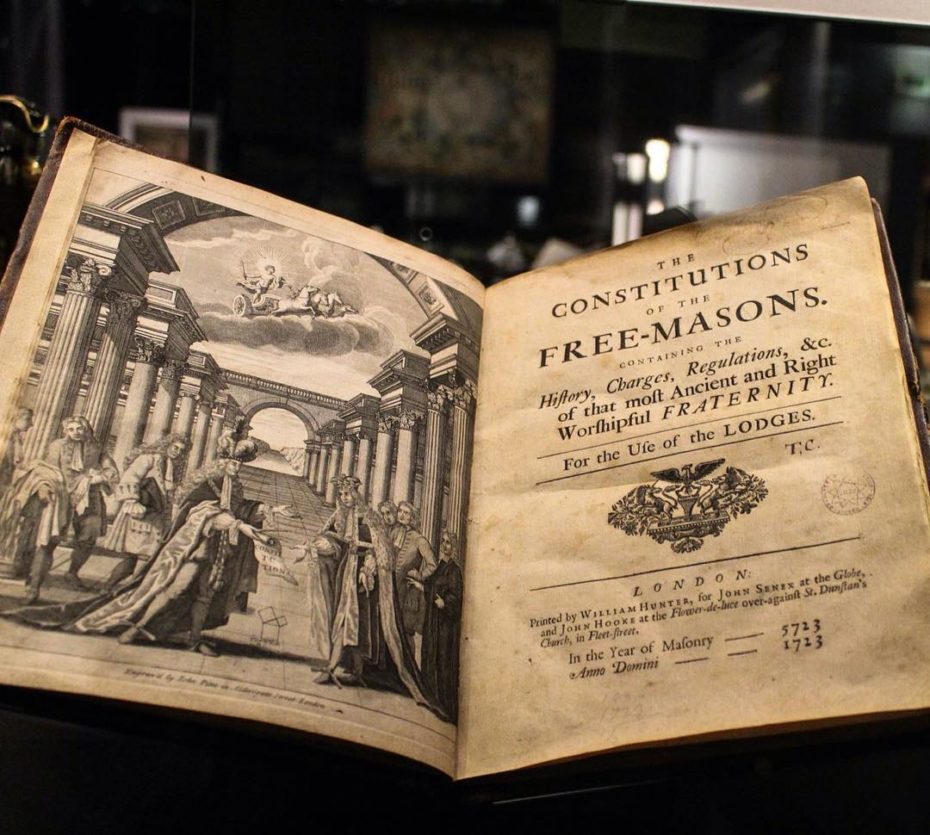
Characteristically hiding in plain sight, track down the Freemasons of France on the Rue Cadet in the 9th arrondissement. Firstly, did you know you can get a first hand look at all of France’s best Freemason treasures at the Musée de la Franc-Maçonnerie (Freemason Museum)? It was founded in 1889 as a kind of massive cabinet of curiosities, and founded by the largest and oldest Freemason society in Europe, the Grand Orient de France. Because, simply put, Freemasons have always been fascinating – right out there on the brink between nerdy club, and super cool cult. There was even an exhibit on them at the Petit Palais in the 1940s:
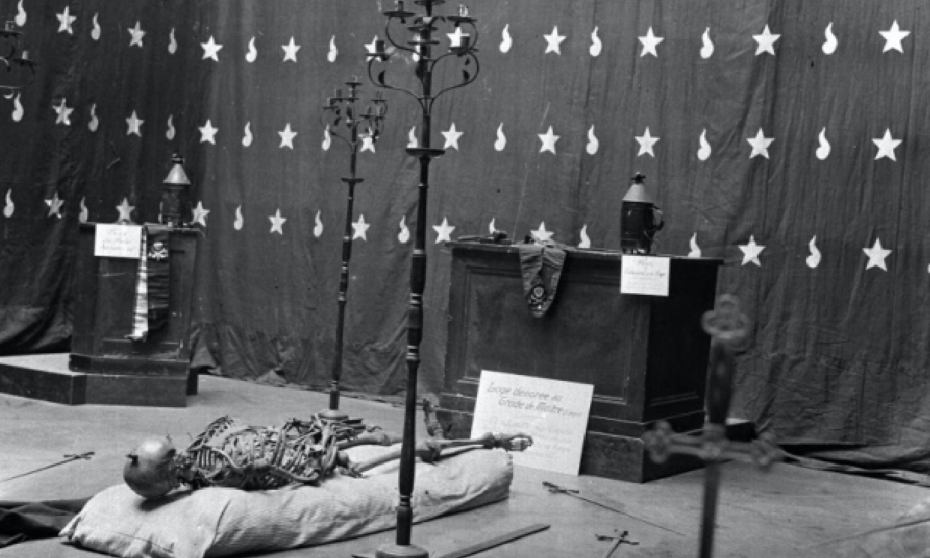
The museum is housed inside a building that looks like the kind of dull office building where the dreaded tax man might one day summon you to fill out more paperwork, but inside, endless stories await, from the masonic sword belonging to General Lafayette (a Freemason!) and the bib (yup, that’s right) belonging to another member, Voltaire. No biggie.
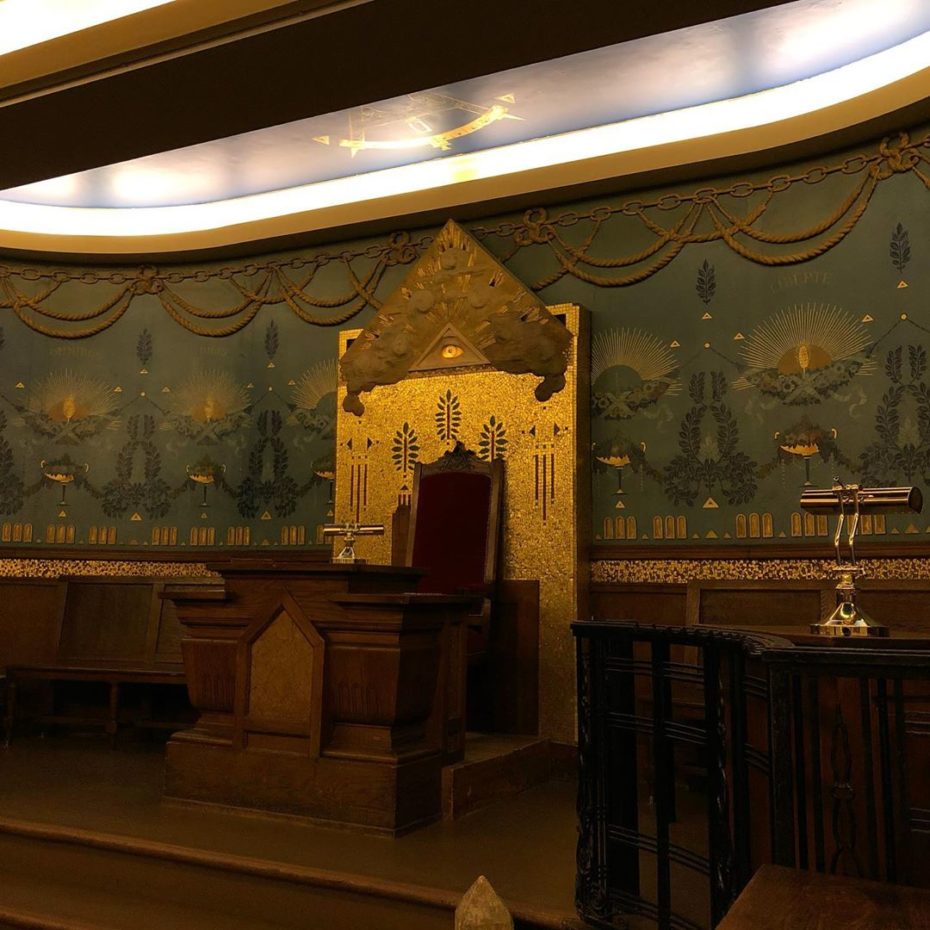
Across the road and next door to the museum are two libraries, effectively acting as freemason gift shops, selling all kinds of esoteric souvenirs, from eyes of providence, medallions and pendulums to masonic robes, bibs and even daggers!
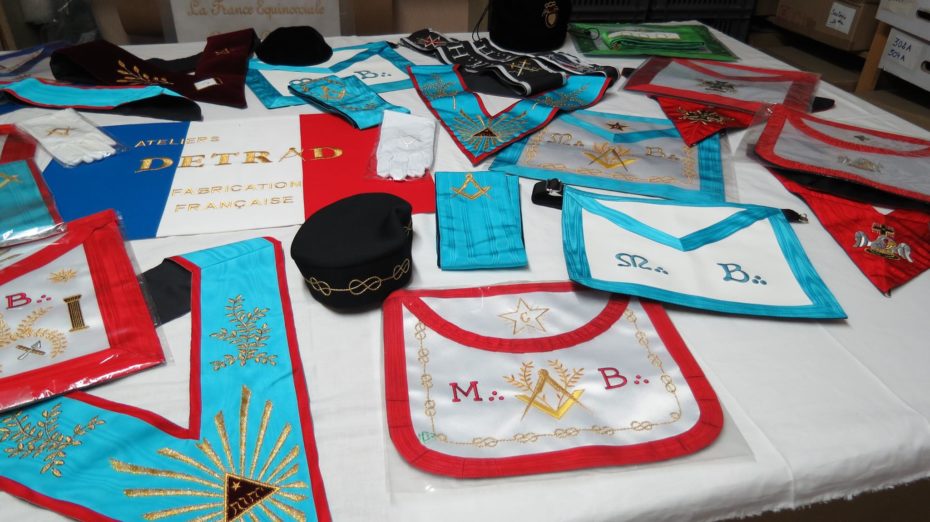
Shopping like a sorcier (witch)
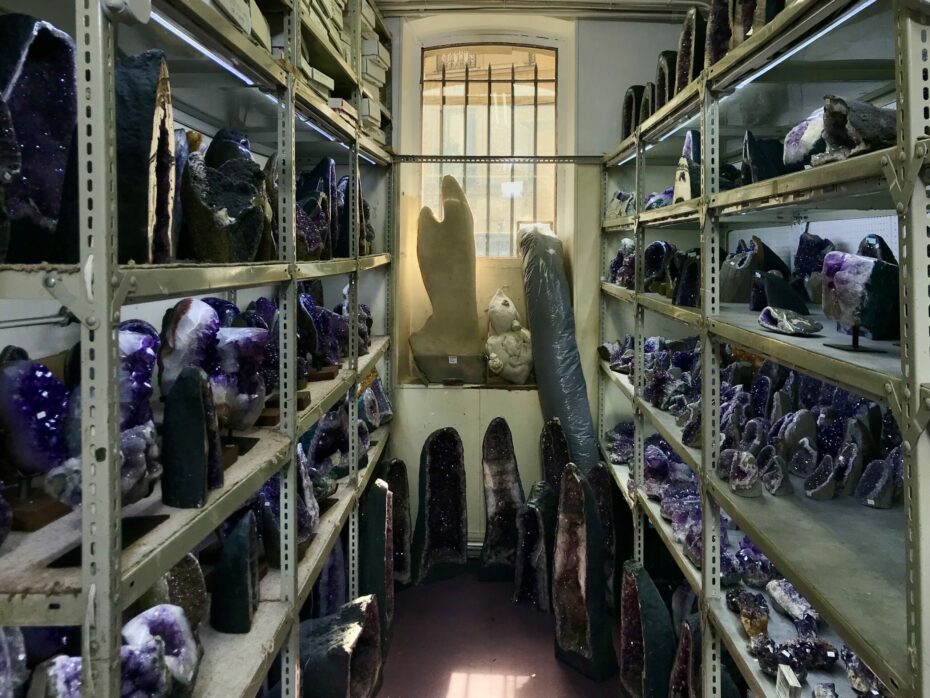
To pick up some good vibes, get your crystal fix at Minerales Do Brasil. Hidden at the back of a network of courtyards, paw through flatbeds of stones and browse their gorgeous inventory of geodes. (86 Rue de Miromesnil, 8ème; +33 1 45 63 18 66; open Monday – Saturday).
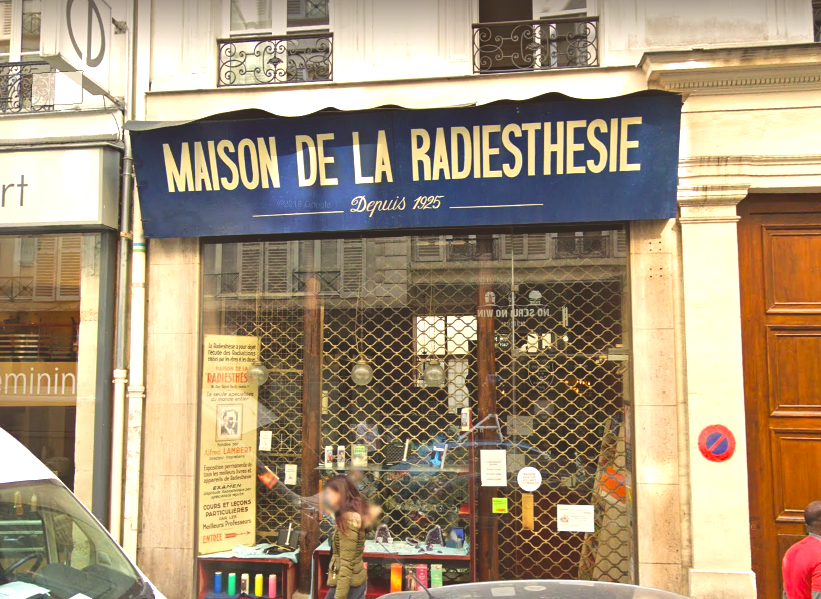
You don’t have to be a sorcier (witch) to enjoy these spots, but many of them are the ideal spot to shop for the perfect crystal ball. Central Paris in particular is a great spot to stumble across otherworldly bookshops and stores, and our favourite is the La Maison de la Radiesthésie, or “The House of Divination.” Founded in 1925 by a man named Monsieur Lambert, it’s the oldest esoteric store in Paris, and offers the greatest choice of pendulums, tarot cards, as well as classic and new written works on spells, ruins, astrology, spirituality, and more.
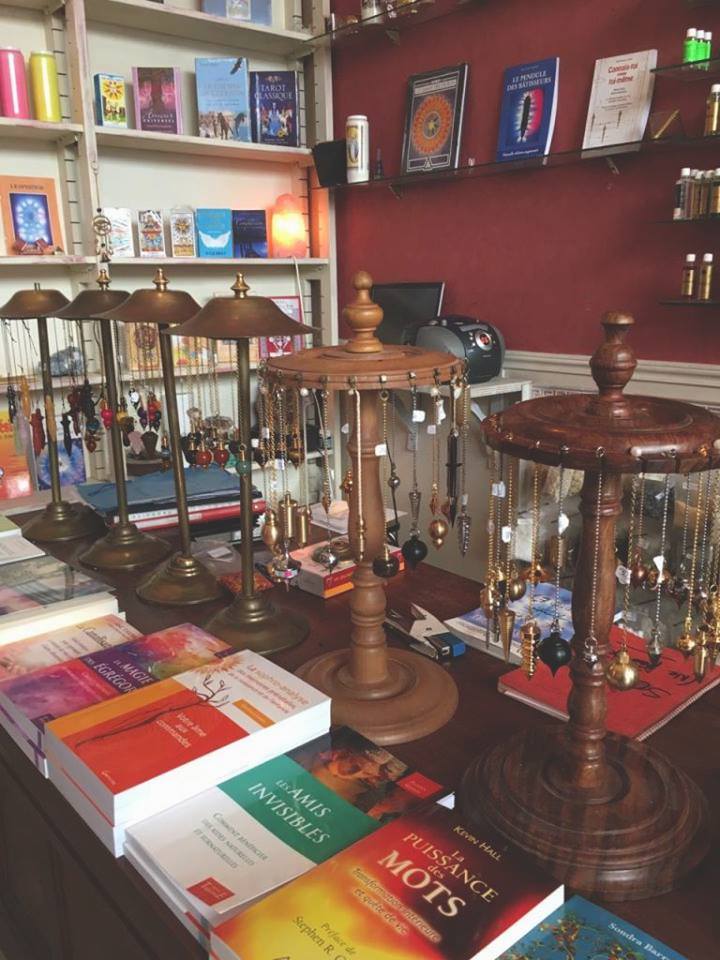
If you can’t make it to our favourite spot, think about heading to the esoteric branch of Gibert Jeune booksellers by Notre Dame, aka Gibert Jeune – Librairie ésotérisme, or head over to the 1st arrondissement at La Librairie du Graal, which is also renowned for its impeccable literary selection and top notch conferences. Once you’ve loaded up on books, head over to the legendary Passage Jouffroy to get your crystal fix…
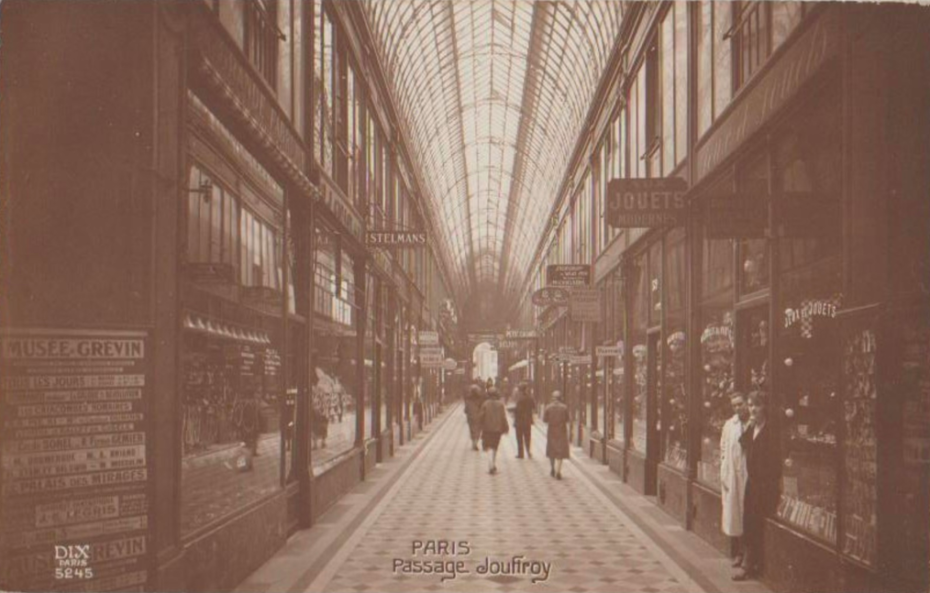
Exploring the 19th century Passage Jouffroy is a magical experience in and of itself. Get lost in its tiny, light-dabbled halls, which take you from the 9th arrondissement’s Boulevard Montmartre to the 2nd arrondissement’s Rue de la Grange-Batelière in clandestine fashion. They’ll also lead you to its dreamy crystal shop, Brésilophile, which has an entire esoteric department both in store, and online. Don’t have time to make an afternoon out of wandering the passages with your crystals? Seek your gems at the cozy boutique La Roche Mère in the 11th arrondissement, or Minerales Do Brasil in the 8th.
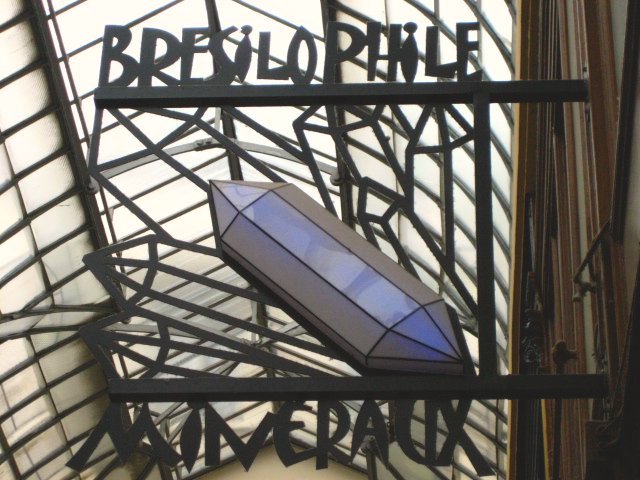
Now, for a wee bit of context. Paris has always been one of history’s most prominent cities and, consequentially, a hot-bed for all kinds of spiritual figures and movements. Paris was progressive. Paris was the pulse of the Belle Epoque, an age of both aesthetic and esoteric indulgence – and while those golden years eventually faded, so many who lived in Paris inherited that taste for the esoteric.
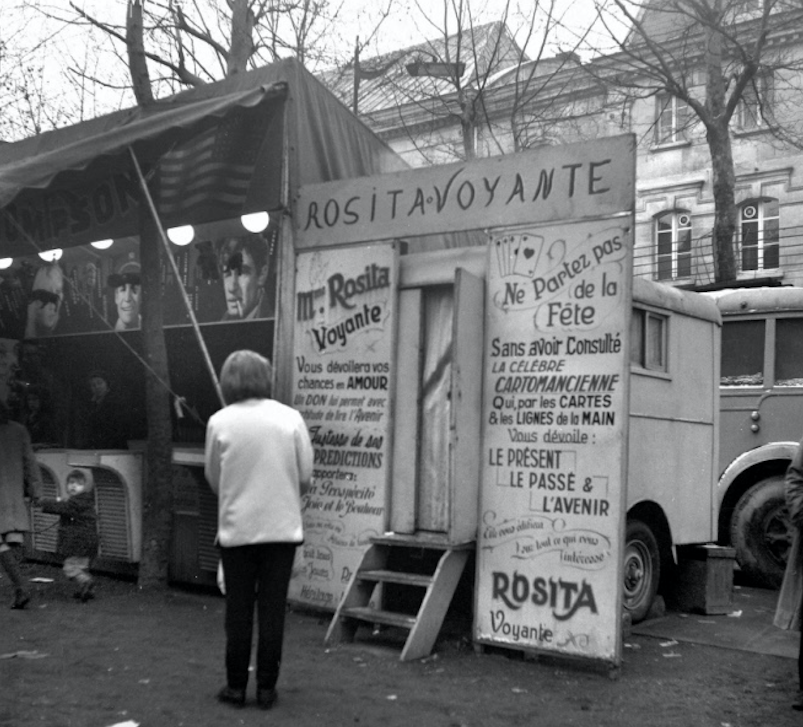
Their city experiences a “revival of medievalism” and pagan rituals, explains Nadia Choucha in Surrealism and the Occult. Parisian artists, from the Romantics to the Surrealists and even into the Modernists, looked to esoteric themes as a source for storytelling outside of the traditional Christian framework.
Are your Stars Aligned?
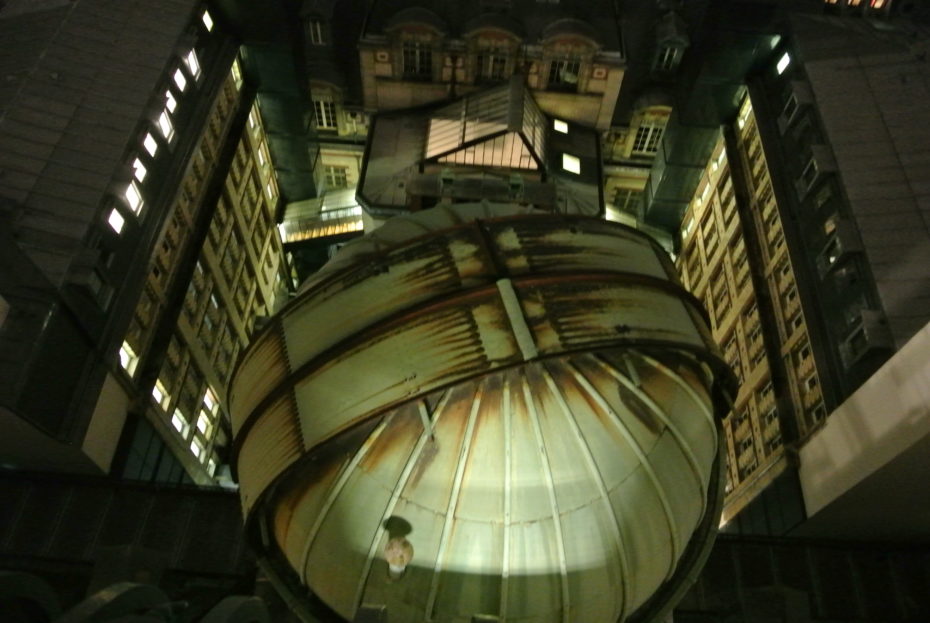
Get this: on Monday and Friday evenings you can visit the Sorbonne Observatory, where they used to teach astronomy to university students over a century ago. Under a wooden dome, 40 metres above the city, all the observatory equipment dates back to the 1930s, including the impressive telescope, which still works perfectly. The enchanting tour comes complete with stargazing from the panoramic balcony that boasts breath-taking views of Paris. There are just five spots available per visit and the only way to make an appointment is to call this number (+33 1 42 24 13 74), write a cheque for €7 to Société Astronomique de France, and send it to 3 rue Beethoven, 75016, Paris. There can sometimes be a waiting list of several months, which only makes it all the more special, of course.
(17 rue de la Sorbonne, 5ème)
Dining inside the Fortune Teller’s Parisian Lair
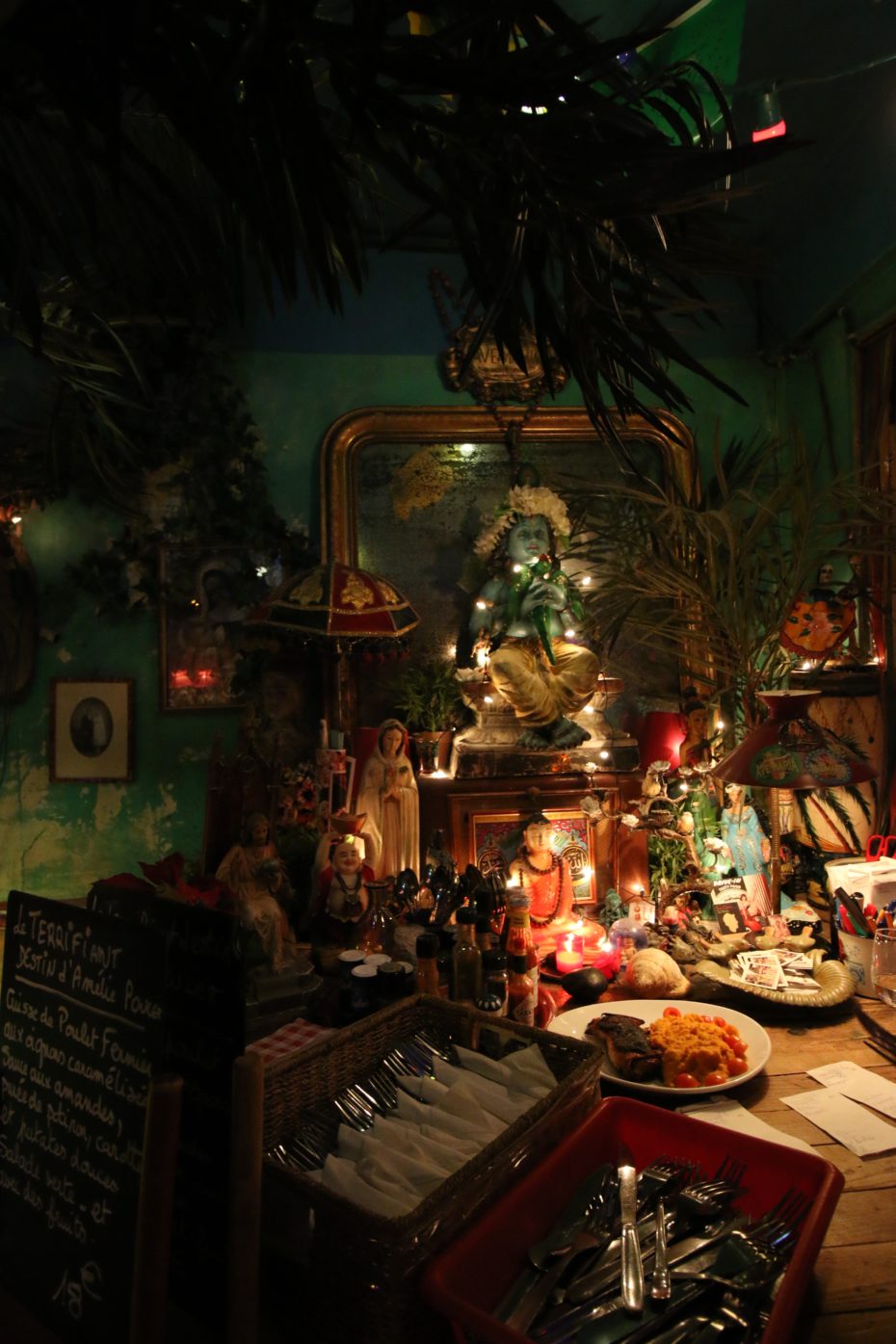
Surrounded by kitschy shrines, weathered walls and gypsy decor, L’Ave Maria is where you might imagine Frida Kahlo discussing the esoteric secrets of surrealism with Esmérelda herself. The cozy Oberkampf dive bar and restaurants serves arguably the cheapest beer in Paris and pitchers of frozen margarita for sharing with friends. The kitchen serves generous and delicious plates of world fusion cuisine to feed the soul. It doesn’t get much more bohemian than this joint.
(1 rue Jacquard, 11ème; +33 1 47 00 61 73; open until 2am)
Meet Your Medium
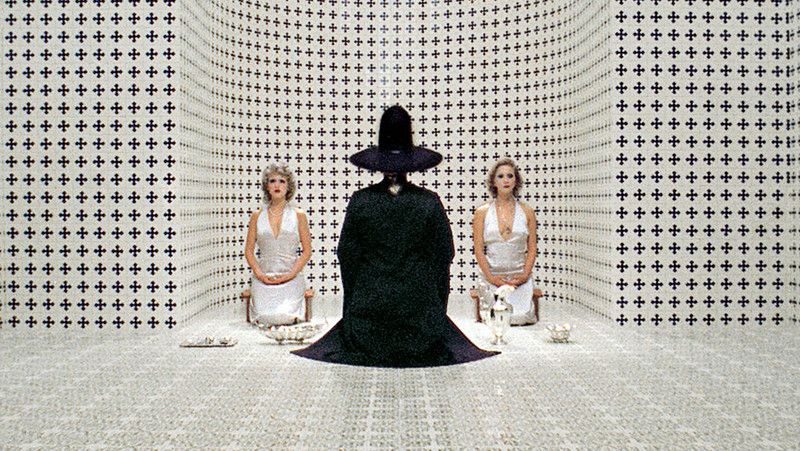
If you’re a cult film buff, you’ve almost certainly heard of Alejandro Jodorwosky. The Chilean filmmaker (Holy Mountain, El Topo) made movies in the 1970s that pushed the boundaries of consciousness. In other words, they were super trippy films that blew John Lennon’s socks off.
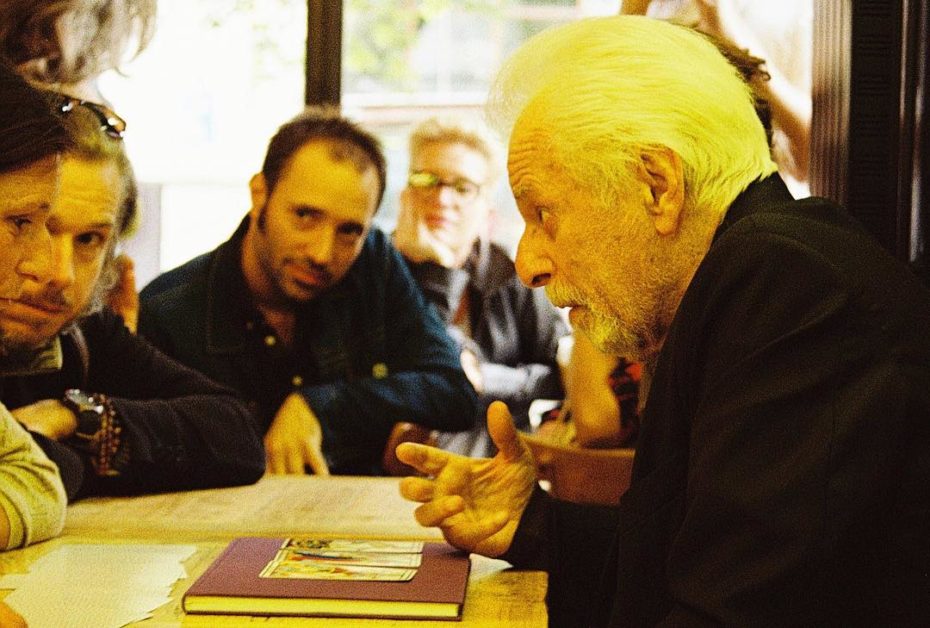
Jodorowsky is not only still around today, but as active as ever; he has a new film coming out this month and regularly gives lectures in Paris, where he lives. At a café in the 11th arrondissement, he also gives regular tarot readings – which he quite literally wrote the book on. Seriously, many moons ago Jodorowsky and a pal restored the oldest tarot known to humankind, the Tarot de Marseille, and paired it with their own “psychomagical” process of reading cards. Every now and again, you can find him doing free readings at one of his favourite spots by the Bastille, La Promenade cafe. The best way to stay in the know is to follow them on Facebook – and be sure to get there super early to get a good seat.
The House of Bones
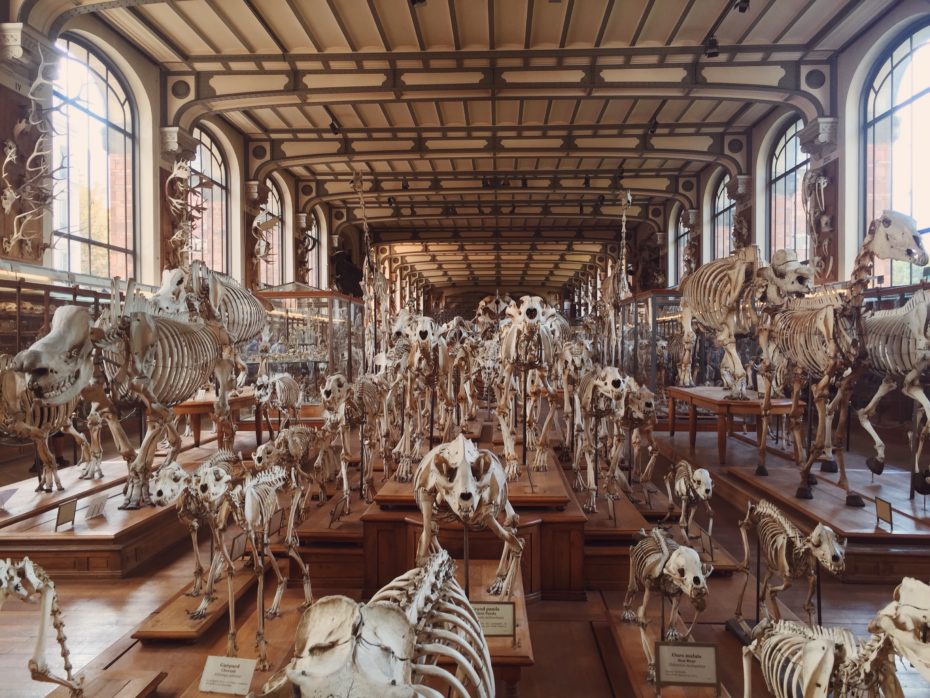
Muséum National d’Histoire Naturelle, a.k.a. the Natural History Museum, sounds very ‘science class field trip’, which is probably why so many tourists miss out on this city’s most curious wonderland that feels every bit like the inside of Hogwarts. Start in the impressive Grande Galerie and find the secret south-east corner staircase behind an unassuming doorway in the shadows of a giant blue whale skeleton. The higher up you go, the more it looks like Harry Potter’s Hogwarts.
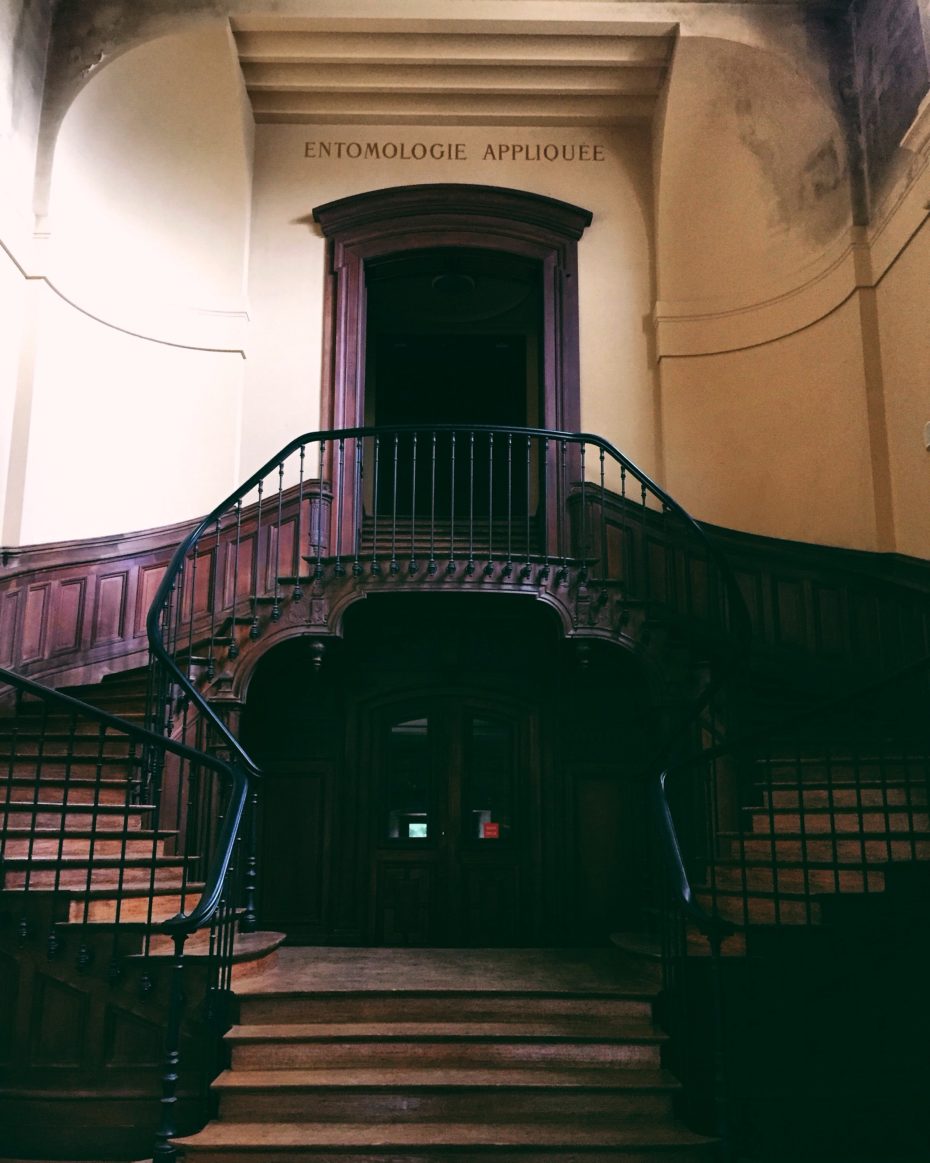
The staircases unveil a hidden layer of the building’s history, when it was once the king’s own cabinet of natural history and an unparalleled scientific institution in the 1700s. Throw open a window at the highest floor for a magnificent view over the gardens and greenhouses, where, depending on the season, giant pumpkins and squash are growing out in the open. You can check how ripe they are on your way to the Palaeontology Gallery (Galeries d’Anatomie comparée et de Paléontologie), which, again, might sound more suited for a science class field trip, but just trust us. This is hands down the most impressive collection of skeletons you’ll ever lay eyes upon.
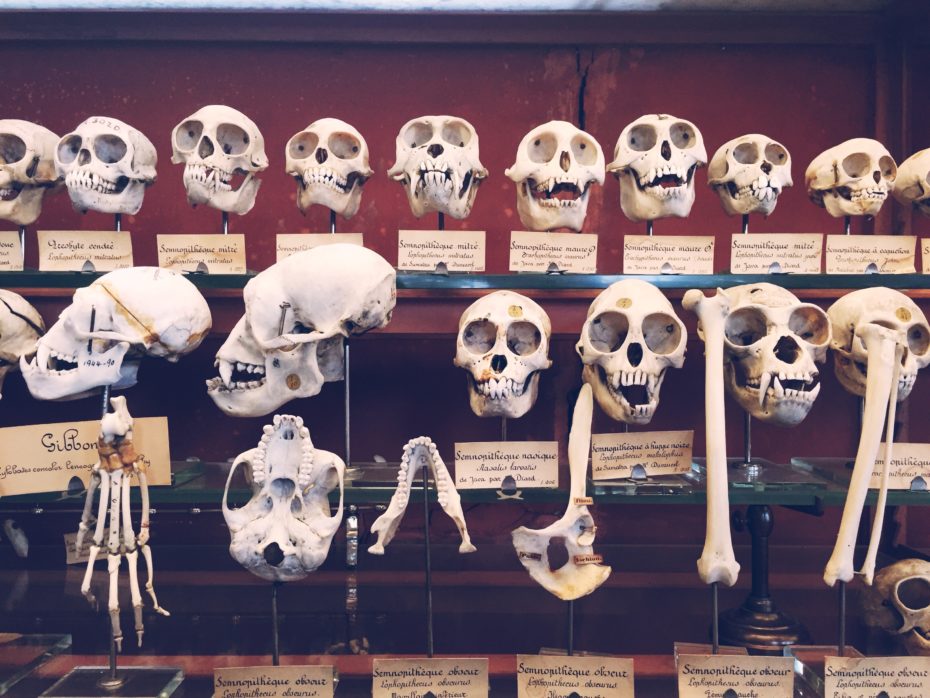
Meet the Noah’s ark ghost army in limbo, waiting to march back to the ark, two by two. This gallery hasn’t been renovated for over a hundred years – and we hope it stays that way.
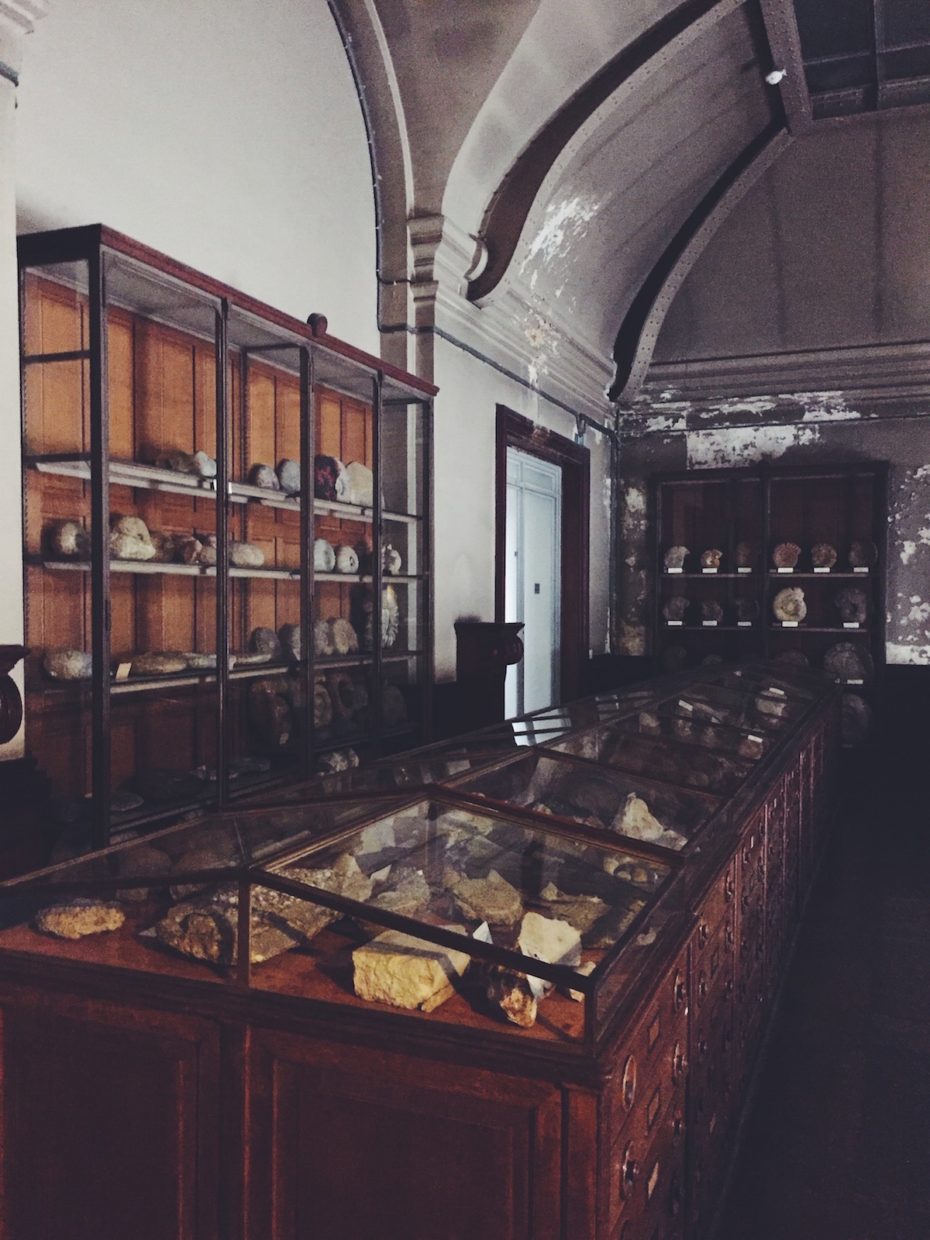
The walls are peeling and the floorboards are creaking; the paper labels in the cabinets are yellowed from age and the calligraphy is of another time. You can even peek up to the old archives on the top floor and see books covered in dust in forgotten glass bookcases.
(Jardin des Plantes, 57 rue Cuvier, 5ème; +33 1 40 79 30 00; mnhn.fr)
Sites of Fantastic Figures and Unsolved Mysteries…
Now, with your lucky quartz crystal in hand, it’s time to hit the streets in pursuit of Paris’ more underground esoteric sites. Start at the 16th century Church of Saint-Merri in the 4th arrondissement, right by the Pompidou Museum…
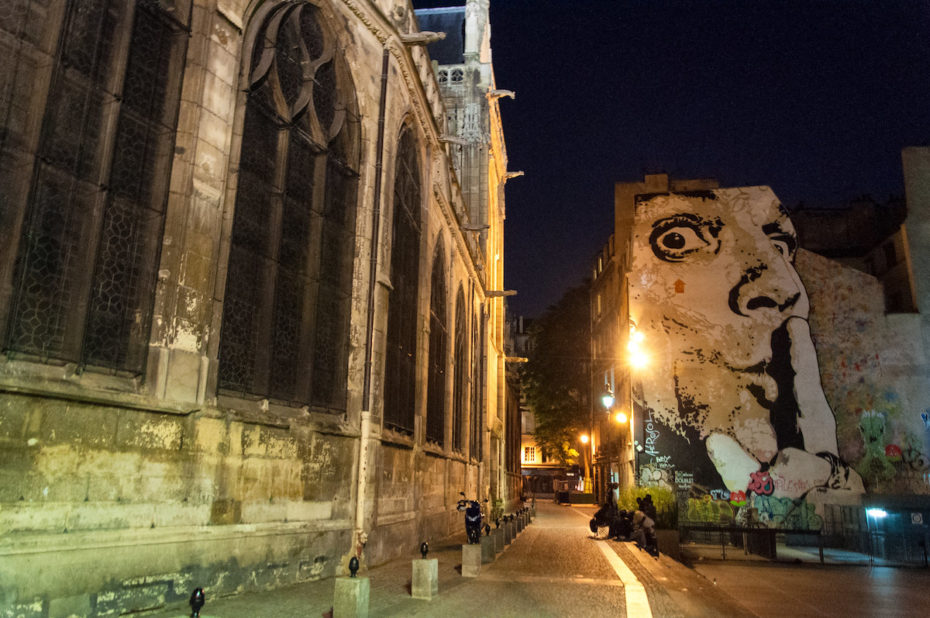
This isn’t your average, ancient church. It’s the Original Church of Satan in Paris – and we’re not talking the Anton LaVey kind. Closer inspection of its main entry reveals a curious figure above the doorway that looks like a devil. Only, this devil has breasts. It also has male features. Meaning, this baby is a Baphomet!
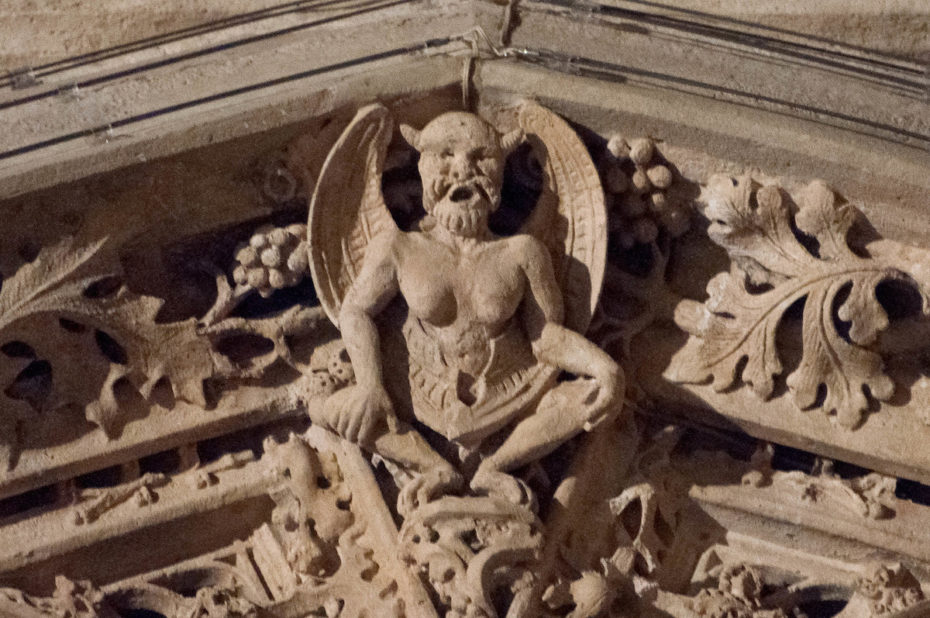
This is the official, sacrilegious deity the Knights Templar worshipped in secret, and was thus woven into various occult and mystical traditions in the future. You might also recognise him from the Church of Satan.
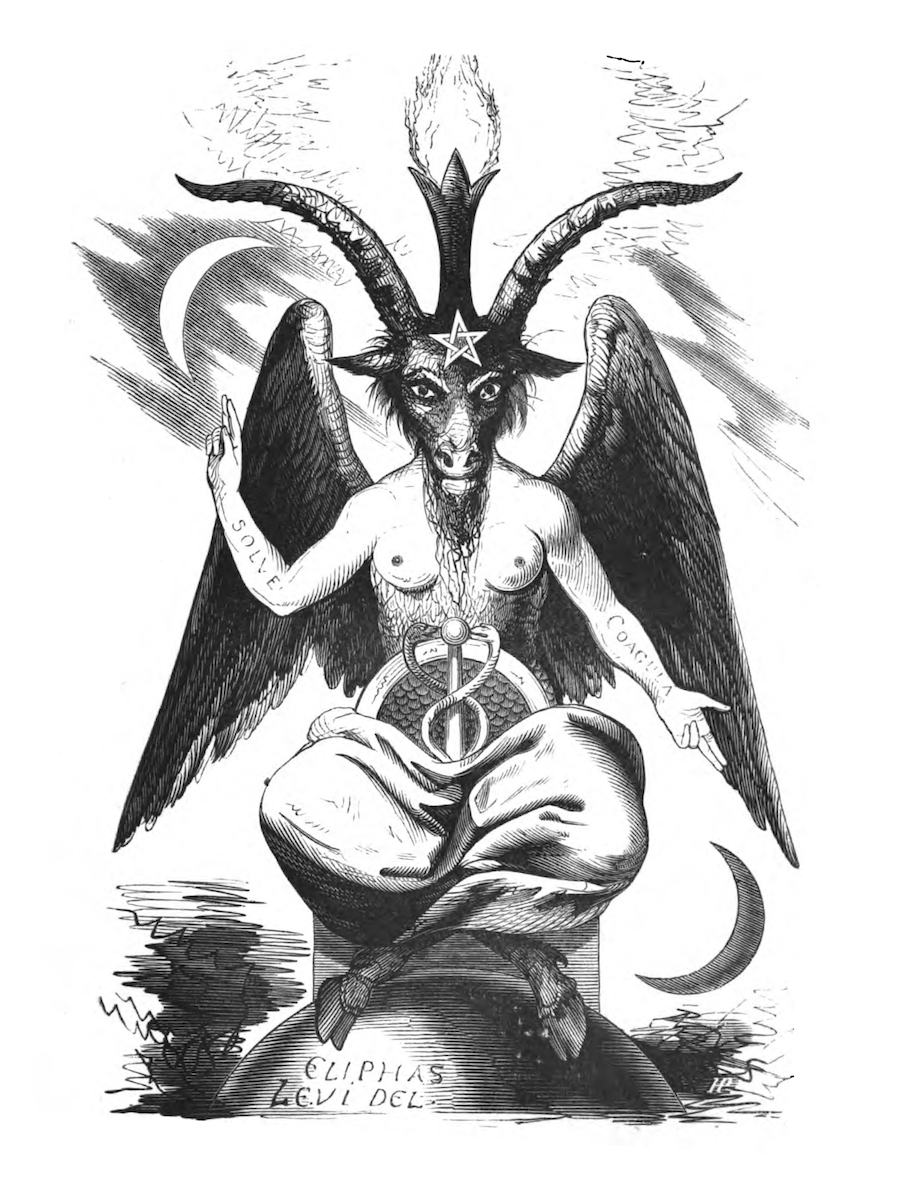
The wild thing about the placement of the Baphomet on this Christian church, is that it was obviously done after the Knights Templar had fallen in the 12th century. In fact, specialists say it was likely added in the 19th century, which would have fallen right in line with Paris’ whole Belle Epoque, esoteric revival. There’s even a pentagram in one of the stained glass windows inside, which begs the question: what secret purposes did this ‘church’ really serve? Pagan temple? Spiritualist gathering place? The mystery continues…
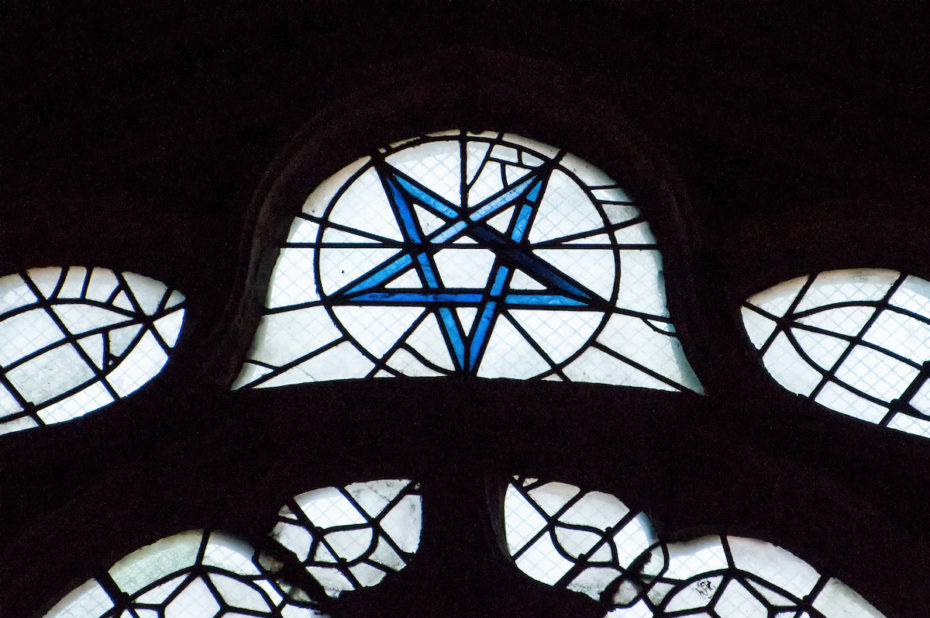
Speaking of churches, you’ll want to check out the Church of Saint Sulpice – which has a curious white obelisk on its left hand side that was built some 200 years after the original structure. It’s known as the “Gnomon.”
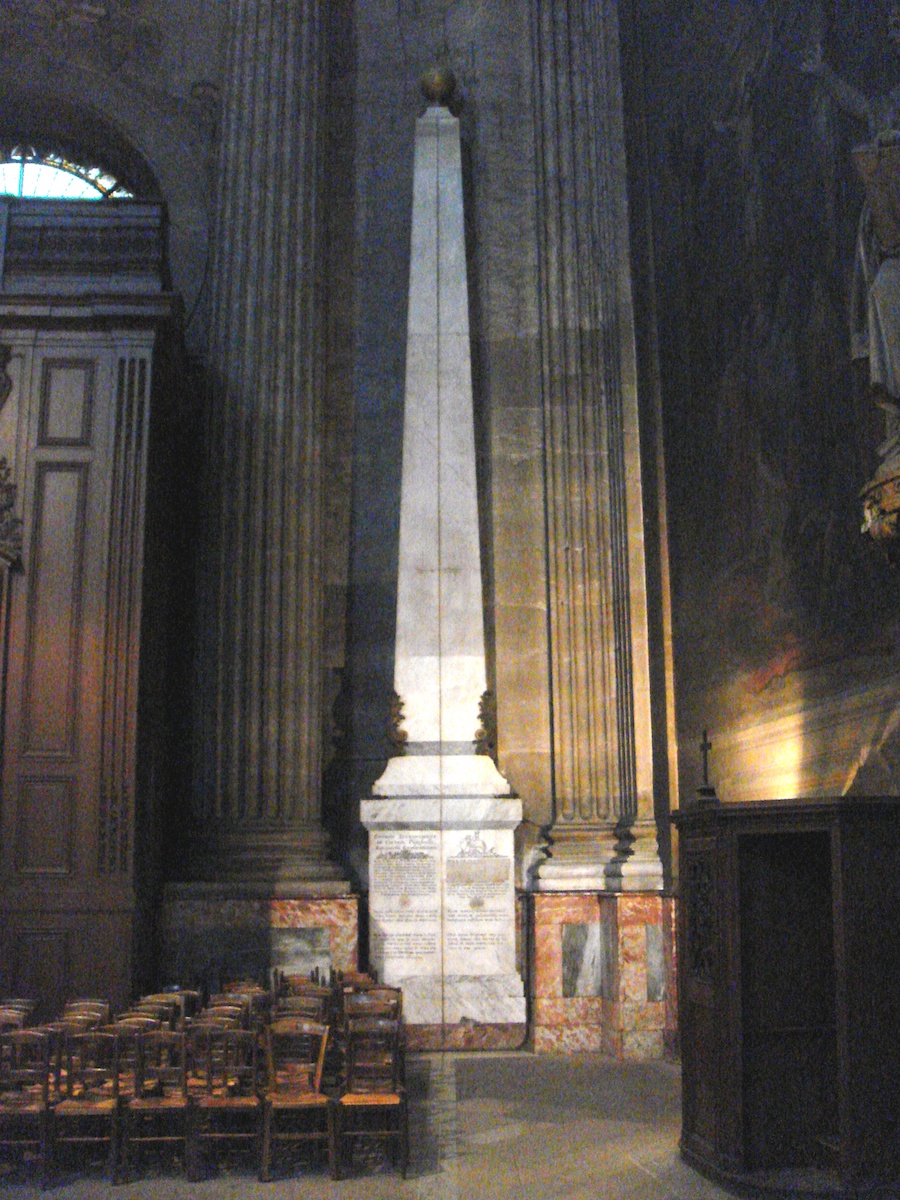
You may remember mention of this from The Da Vinci Code, in which author Dan Brown refers to a mysterious “Rose Line” running through the church of Saint Sulpice, that leads to the resting place of the Holy Grail. Sure enough, there is a line running through the church…
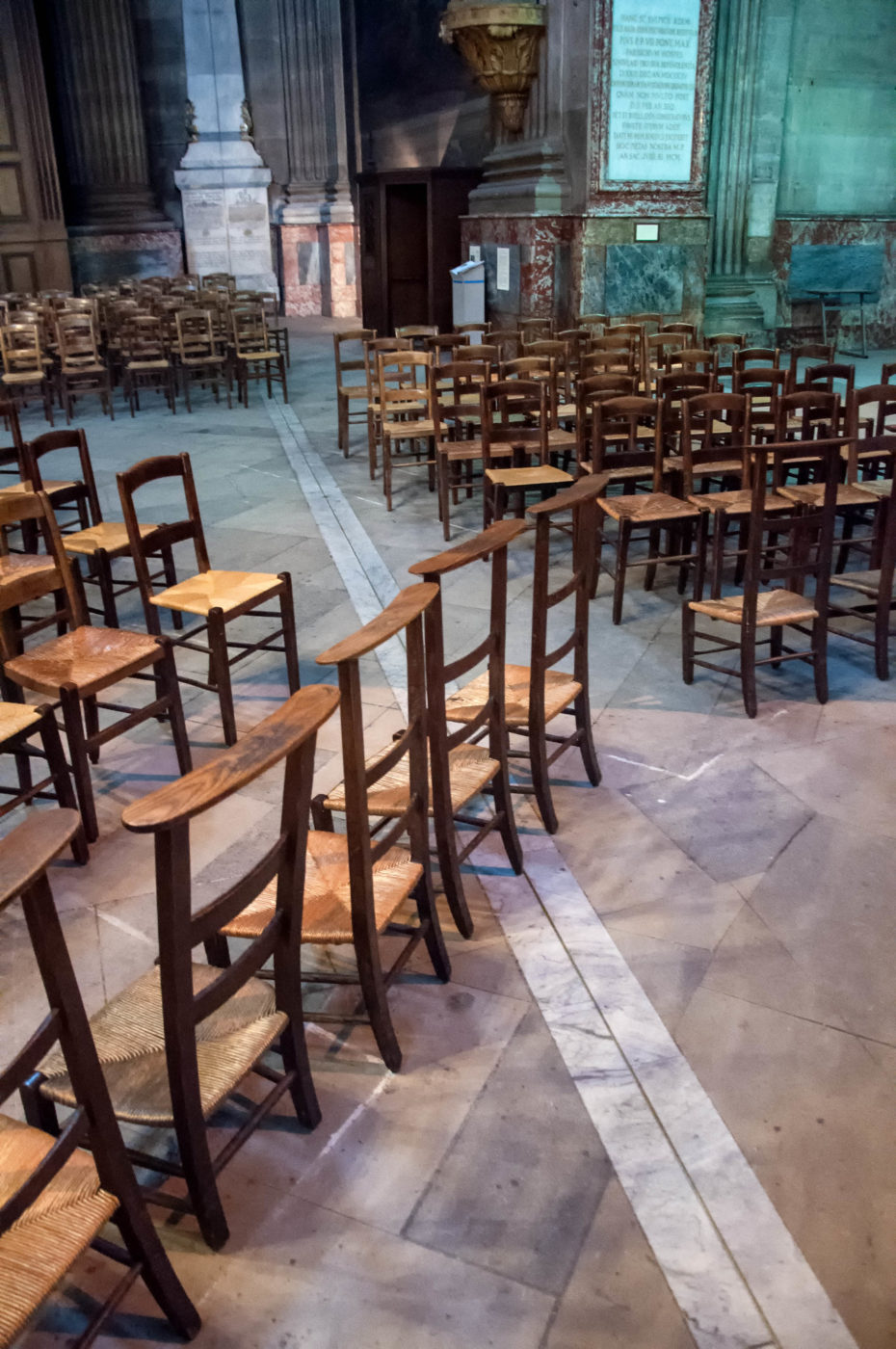
But the line doesn’t lead to the resting place of Mary Magdalene. It’s actually a complicated astronomical device used to determine various solstices. It’s pretty spectacular when it’s in action – and also, pretty darn Pagan! It can even display when the earth is closest to the sun, and cast it on the obelisk. Enjoy this 8th grade diagram of how the whole shabang works:
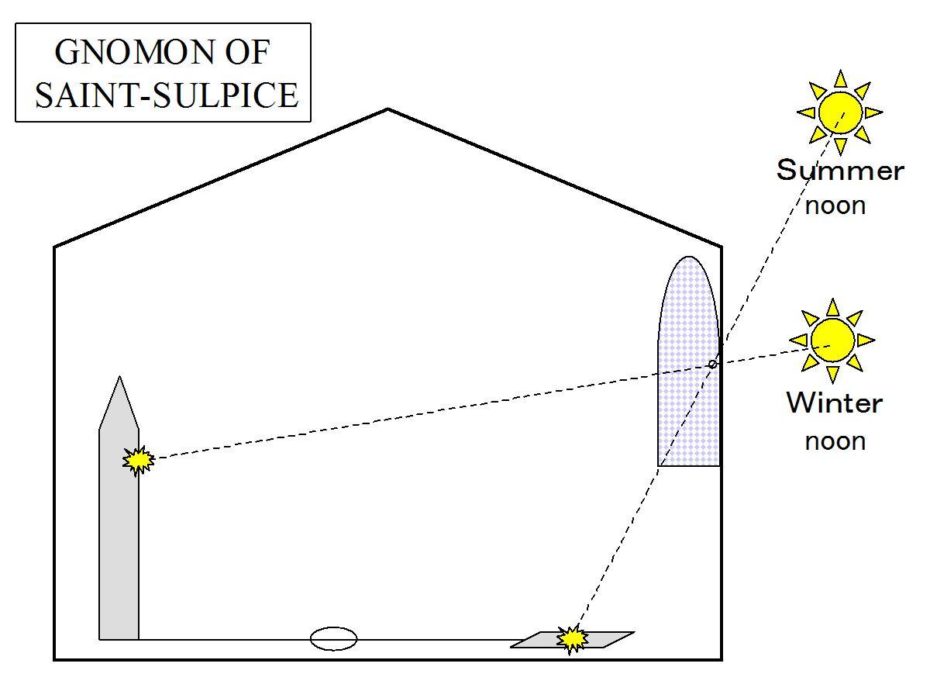
Saint-Sulpice was being built at a time when the theories of poor old Galileo were finally getting some breathing room from the church, which left more room for otherwise blasphemous, ancient druid and pagan traditions to creep in. So in that sense, Saint-Sulpice is kind of a gorgeous paradox – a Stonehenge in sheep’s clothing.
Ok, but now let’s get out of the church and into the cemetery with one of our favourite, overlooked historical figures, Monsieur Joséphin Péladin – aka, the hottest cult leader in Paris…
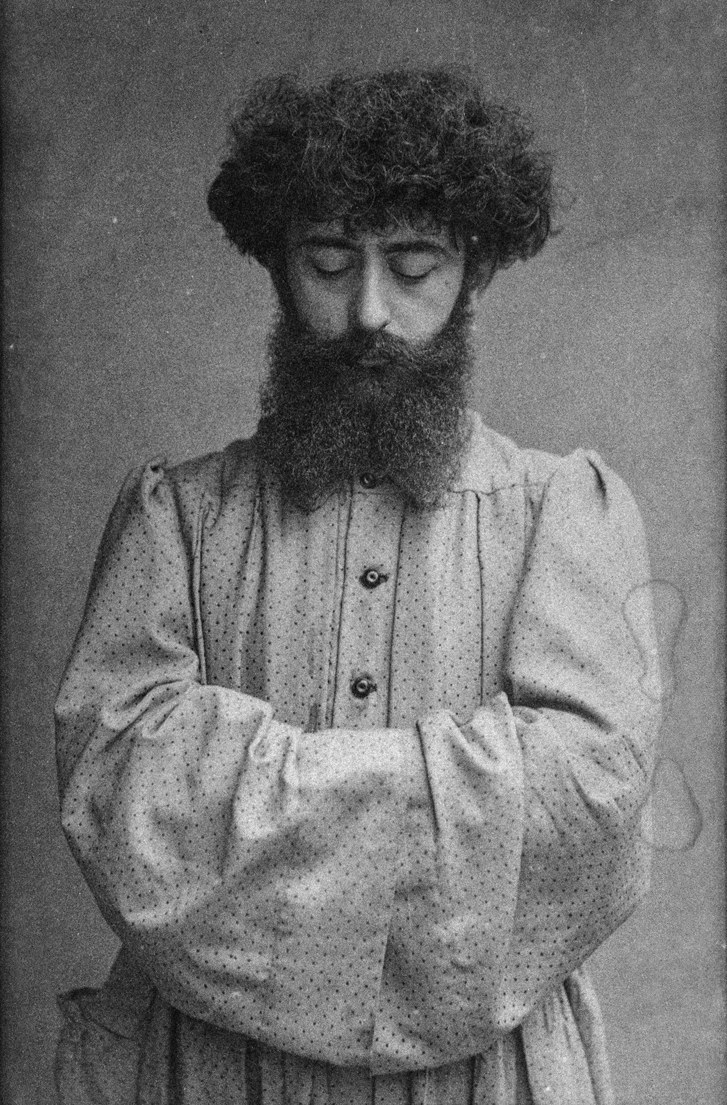
Joséphin was an art critic who came from spooky stock. He was taught the ropes of a kind of philosophic-occult Catholicism called “Martinism” by his dad, and started his own literary salon – as one does, in Belle Epoque Paris – called the “Salon de la Rose + Croix” (Salon of the Rose + Cross). Joséphin curated six art, music and cultural salons in the 1890s, in what was effectively like a Coachella for the black sheep of upper-crust intellectuals in Paris.
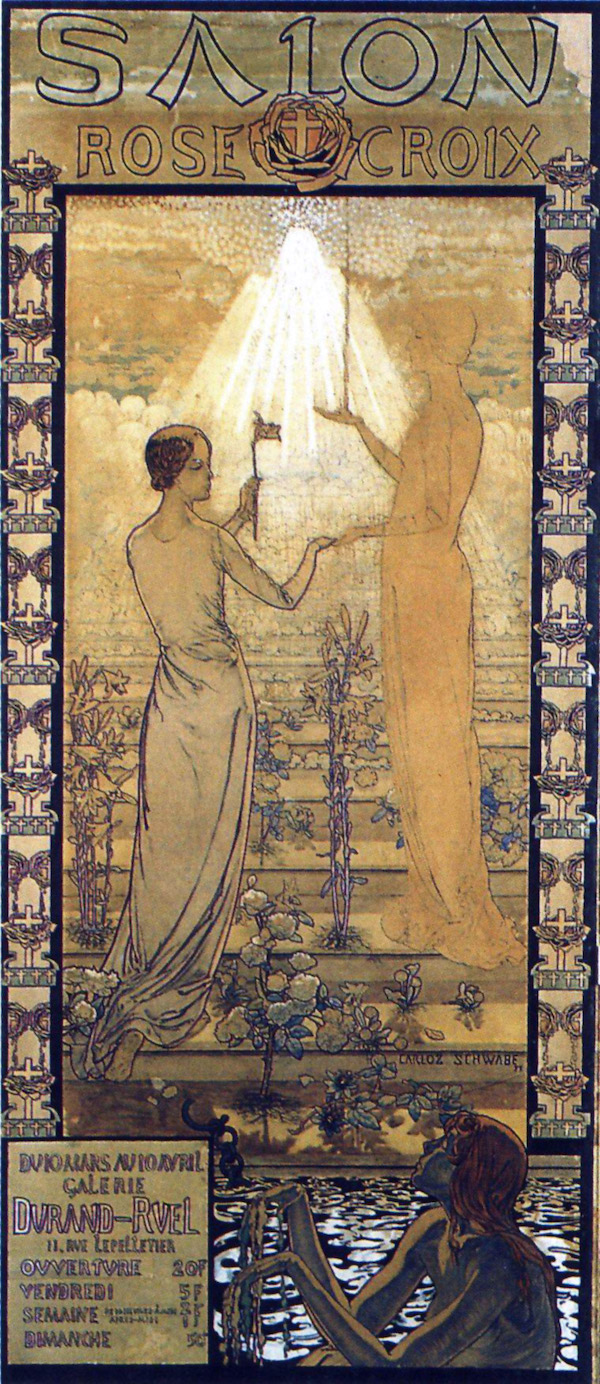
One of their first posters depicted the severed head of Emile Zola (a very popular, ‘mainstream’ writer), and subjects of submitted work has to speak to ancient legends, myths, the occult, etc. It’s said that some of Joséphin’s influences for the events were Edgar Allan Poe and Arthurian Legends, just to give you an idea of the ambiance – again, très spooky, but also with a confident middle finger to convention.
Joséphin died in 1918, and you can find his rainbow grave at Batignolles Cemetery – one of Paris’ lesser known mini-cities for the dead, and a great alternative to Père Lachaise or the Montparnasse Cemetery if you’ve already seen them.

The ‘Immortal’ Alchemist’s Inn
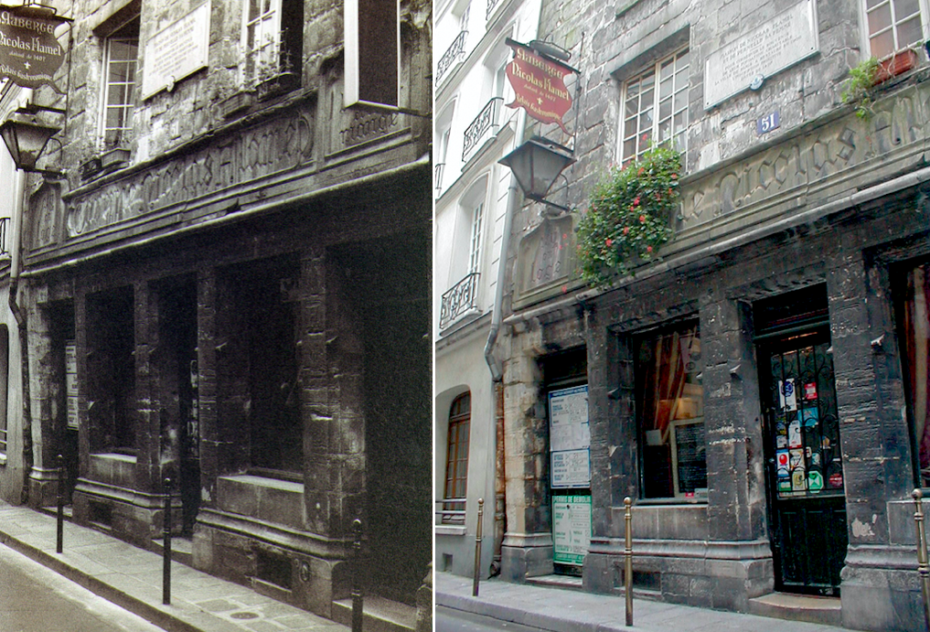
Not only is it the oldest house in Paris (completed in 1407), but it was run as an inn by one of history’s greatest alchemists, Nicolas Flamel. Rumoured to have created a philosopher’s stone that rendered one immortal, the 15th century scribe became the stuff of legend both during, and after his death, although there are many debates about how much of his story is true. Regardless, his house endures within his original purpose: to be used as an inn for the weary traveler.
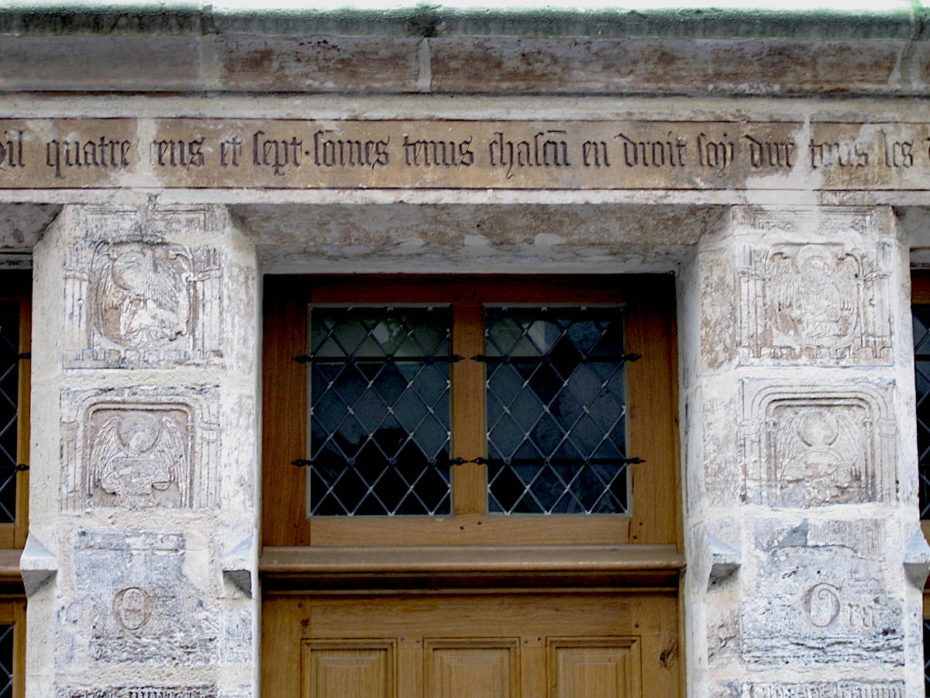
Gustave Moreau’s Atelier
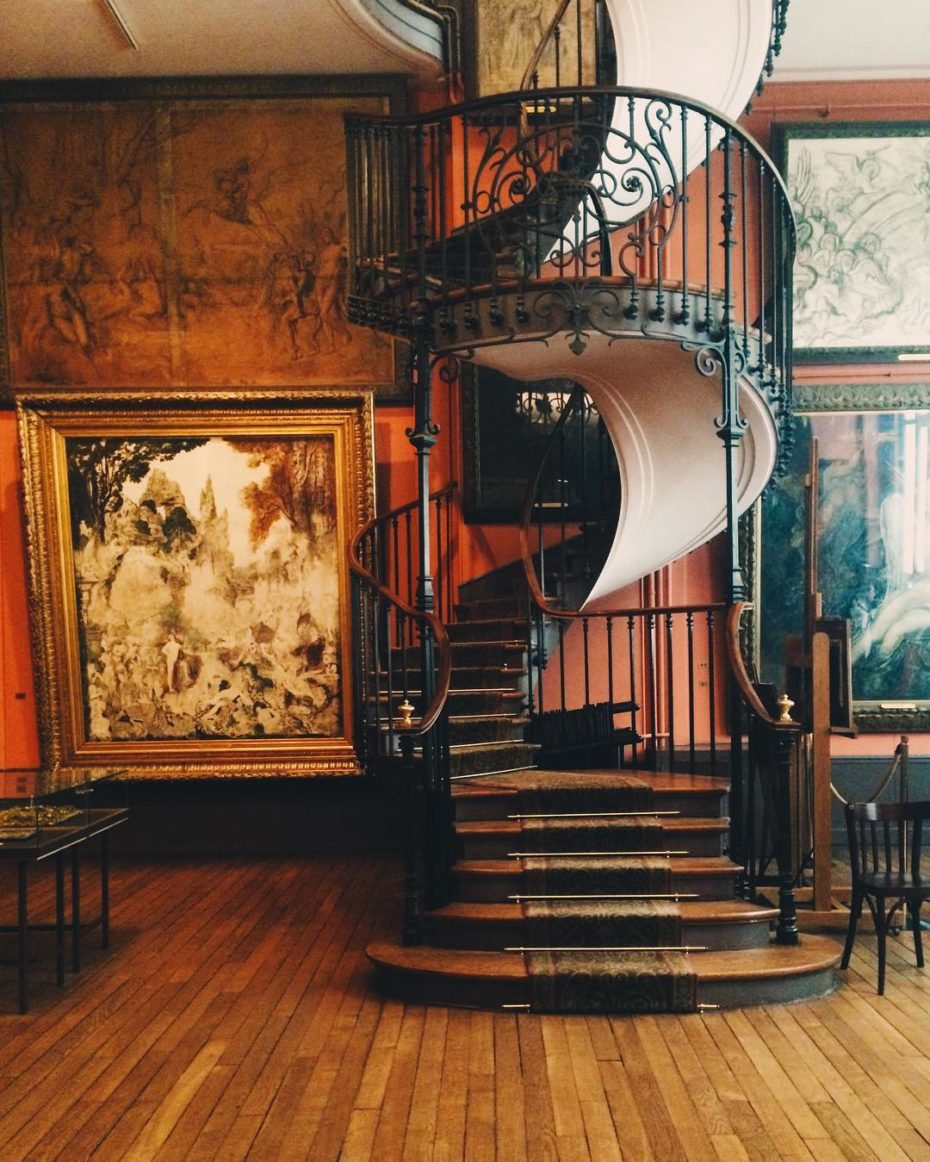
Last but not least, our man Gustave Moreau. He was a heartfelt romantic, and a very dramatic Symbolst painter; we’d argue no one has painted more scenes of Salomé zapping off John the Baptist’s head in a ball of light than Gustave.
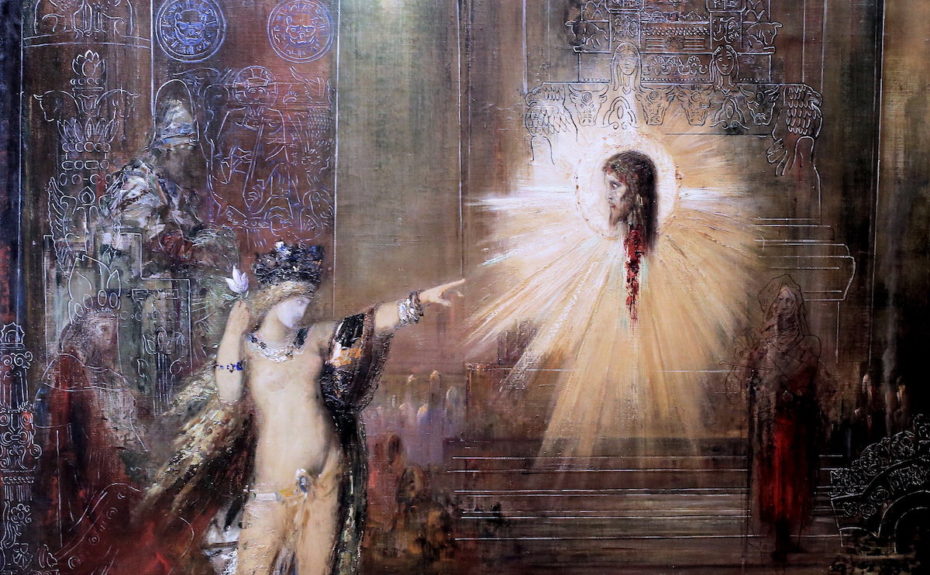
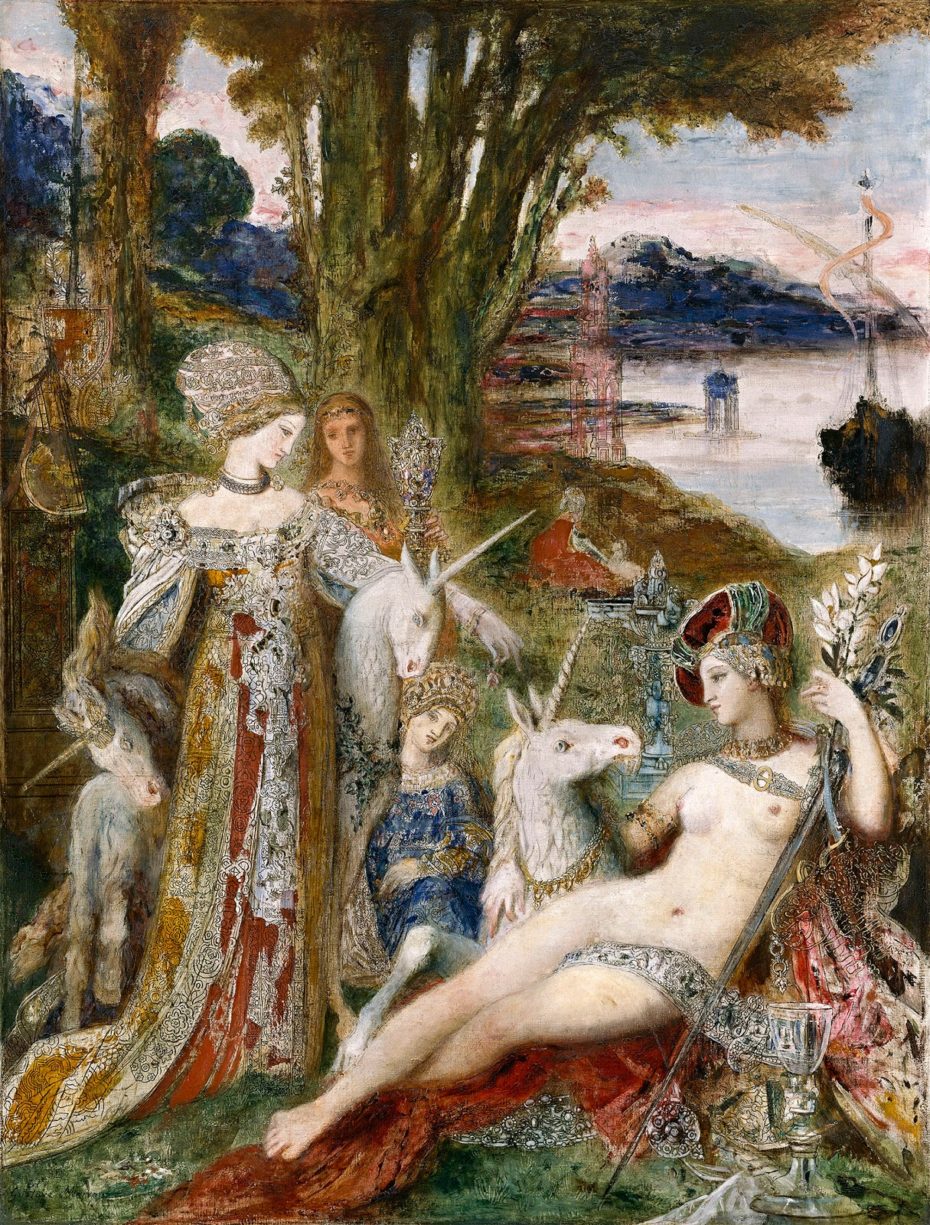
His atelier-turned-museum is in the 9th arrondissement, and aside from being filled with his paintings of unicorns, goddesses and seriously shamanistic mystical-flower-lady paintings, gives you a glimpse into his everyday life; his study and bedrooms are on display, as are all his personal effects, from ancient Roman vases to taxidermy butterflies. Not to mention, the most hypnotic staircase in Paris…
